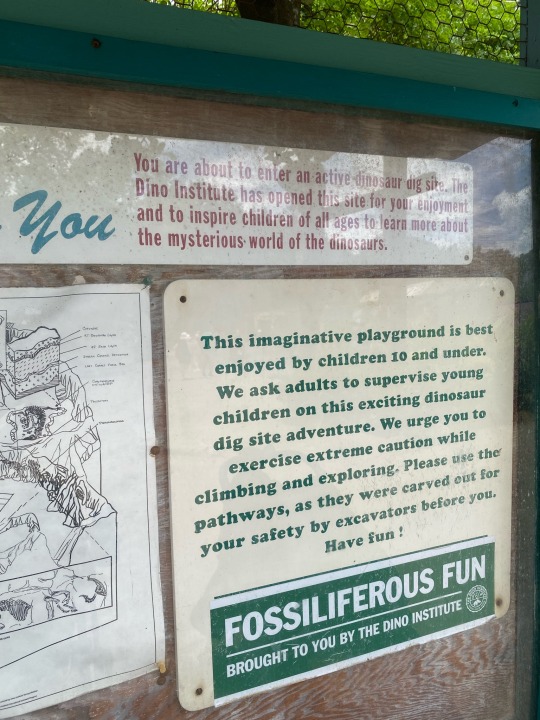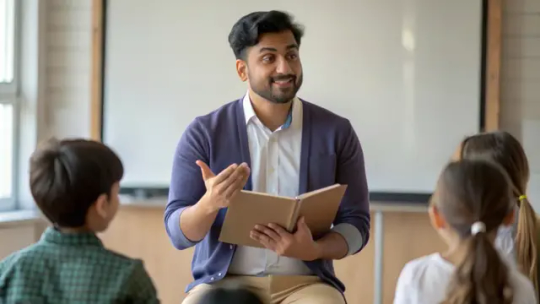#Teaching Methods
Explore tagged Tumblr posts
Text

Montessori education
“Traditional Montessori educational materials on display at the Triennale di Milano ‘Designed for children’ in 2017.” - via Wikimedia Commons
#montessori#montessori education#education#pedagogy#education methods#teaching methods#wikipedia#wikipedia pictures#wikimedia commons#education materials#triennale di milano#children’s education#childhood#kidcore
24 notes
·
View notes
Text
Hello everyone!💜
Since it’s my birthday today I would like to show y’all not only the origins behind me posting history facts, but also where my passionate love for history and dinosaurs comes from!

So when I was a pre-k toddler my parents lived near to Disney World and a couple times a month they would drive out with me to Animal Kingdom and head straight to “The Boneyard Playground”.

Here I would spend hours exploring and messing around however the area isn’t just filled with slides and things to climb on, though there are a lot as you can tell!


My favorite being the Columbian Mammoth that is found in the fossil dig sandbox, where I would enjoy using a brush to brush off the sand off their bones!

Most importantly there are these Boards found in the playground that are full of info on the remains that you can find here, which are accurate for 1998, the year it opened!


Which as a little kid who was both dyslexic and a functioning autistic, I actually enjoyed trying to reading, as I like many other kids that visited the site, I got to physically feel and see the exact bones they were talking about!


These boards I have always hoped to recreate in spirit with their accurate information and providing as many visual images on the fact that I can squeeze into them to help better connect to the facts!
Recently I revisited the site as it’s set to be permanently closed and destroyed later next year, which I highly recommend you go visit if you get a chance!
I hope I have shown the importance for sites like these in educating others, as not everyone learns best through books especially ones with boring writing and / or without colorful pictures!

#history#education#boneyard playground#dinoland usa#animal kingdom#disney world#dinosaurs#teaching methods#educator#learning methods#nickys facts
8 notes
·
View notes
Text
#university#college#studyblr#studying#student life#contact teaching#face to face teaching#teaching methods#teaching#education#higher education#polls
10 notes
·
View notes
Text
Top 10 Must-Read Books for Teachers

Discover the 10 Must-Read Books for Teachers! Whether you're looking to reignite your passion, reflect on your purpose, or grow beyond the classroom, this thoughtfully curated list is for you. From powerful memoirs to practical wisdom, these books nurture both the heart and craft of teaching—designed to enrich you as an individual and a professional. A valuable resource for educators who never stop learning. Explore the full blog now!
0 notes
Text
Why is Pedagogy in Education Important?

Pedagogy in Education plays a significant role in shaping learners for the future. It goes further than the conventional ways of teaching. It adopts modern approaches which foster thinking, creativity, and collaboration among individuals. Today's teaching approaches aim at learner-centered education, use of modern educational tools in class, and changing individualized to tailored lessons that help students acquire vital 21st century competencies fitted for our ever-changing world.
0 notes
Text

✏️ Keep Calm, I'm A Teacher Badge
#teacher#keepcalm#school#teacherbadges#handmade#craft#bbloggers#buttons#25mm#badges#pins#koolbadges#badge#badgemaker#teachers#student#university#college#im a teacher#teaching english#teaching jobs#education#career#homeschooling#teaching methods
1 note
·
View note
Text
The Power of Teaching Others
Teaching as Learning https://wp.me/p84YjG-4Af TeachToLearn #EducationMatters #LearningStrategy #KnowledgeSharing #TeachingSkills #LearningProcess #EducationalPsychology #SkillMastery #PeerLearning #ContinuousLearning #zsoltzsemba
Teaching Others Teaching isn’t just about sharing knowledge – it’s a powerful tool for deepening your own understanding. When you teach something, you’re forced to break down complex ideas into digestible pieces, which reveals how well you truly grasp the concept. It’s like trying to explain how to ride a bike – something you can do automatically becomes challenging when you need to explain each…
#Educational psychology#knowledge retention#knowledge sharing#Learning strategies#learning techniques#peer teaching#skill mastery#teaching methods#Zsolt Zsemba
0 notes
Text
0 notes
Text
The Myth of Adult Education: Why the Andragogy vs. Pedagogy Divide Fails
One of the most pervasive myths in education today is that adults and children require fundamentally different approaches to learning. This belief has fueled an entire industry dedicated to “andragogy,” a concept coined to define the supposed unique ways adults learn. But is this dichotomy—adult education versus child education—real? I argue it is not. Instead, this divide reflects social…
#adult education#adult learning challenges#andragogy#cognitive development#education myths#education philosophy#educational reform#effective teaching principles#human cognition#individualized learning#learning engagement#learning motivation#learning theory#lifelong learning#pedagogy#philosophy of education#relevance in education#social barriers in education#societal impact on learning#teaching methods#universal education framework
0 notes
Text
Biology is fun (I'm on an ecology course that started today), although I must admit it felt a little strange to be there with 1st year Biology majors as an 4th year Education major. At least I'm not the only one, behind me there was this girl who's majoring in History (we did a discussion exercise together and she told me then). I don't know what year she's on but at least she's around my age
Oh, and the professor gave us a five minutes break in the middle of the lecture, and towards end of the lecture he asked us to stand up for a moment when a lot of people were getting tired and not really consentrating. None of that has ever happened in my major courses, and the History major said the same thing about their courses. Biology really is a whole another thing
4 notes
·
View notes
Text
instagram
Innovera School, recognized as the best CBSE school in Hadapsar, is dedicated to providing a holistic education that nurtures young minds. As a leading CBSE school near you, Innovera offers a comprehensive English medium curriculum designed to foster creativity, critical thinking, and leadership in students. With a focus on academic excellence and value-based education, Innovera School stands out among English medium schools near you, preparing students for a successful future in a dynamic world.
Join us at Innovera School, where we are committed to creating lifelong learners and future leaders.
#cbse school#cbse school near me#qualityeducation#education#secondary education#lonikalbhor#hadapsar#teaching methods#stem education#pune#primary education#educación#higher education#stemeducation#cbseschoolinhadapsar#Instagram
0 notes
Text
Why Group vs. Private Physics Tuition: Which is Better for Your Learning Style?
When it comes to mastering physics, choosing the right type of tuition can make a big difference in your learning experience. Physics is a subject that challenges many students due to its complex concepts and problem-solving requirements. Whether you are a high school student aiming for top grades or someone preparing for university-level physics, you need to decide between group and private…
#Academic Support#educational choice#group vs private tuition#learning style#personalized instruction#physics learning#physics tuition#study preference#Teaching Methods#tutoring options
0 notes
Text
How Can AI-Powered Chrome Extensions for Educators Help in Classroom Teaching?

AI-Powered Chrome Extensions for Educators are shaking up the classroom. By automating paperwork and streamlining lessons, they give instructors back hours lost to routine chores. The tools whip up short content summaries, draft emails, and brainstorm fresh lesson hooks in seconds. They flag AI-written work, too, and include all-in-one planners for quizzes and activities. Other extensions tweak reading levels, translate texts on the fly, and serve up clear writing models. When educators lean on these smart helpers, they spend less time clicking and more time connecting-with students, ideas, and each other.
0 notes
Text
How Art Integration Learning Transforms the Classroom

Art-integrated learning is changing the classroom by weaving creative expression into everyday subjects. Whether through painting, music, drama, or dance, students explore ideas in fresh, imaginative ways. Linking visual art to math, rhythm to language, and role-play to conversation boosts cognitive growth. Beyond grades, this mix lifts emotional and social skills, nurturing self-expression, confidence, teamwork, and empathy. Because lessons feel alive and inclusive, the approach serves learners of every background. Regular practice also sharpens critical thinking and problem-solving that all disciplines require. In short, art-integrated learning creates a balanced curriculum that supports both achievement and student well-being.
1 note
·
View note
Text
Types of Teaching Methods
There are many ways to teach in the classroom, and each method suits different learning needs. Some common methods are:
1. Student-centred Approach
2. Teacher-centred Approach
3. Collaborative Learning
4. Technology-Enhanced Teaching
5. Inquiry-Based Learning
6. Flipped Classroom
7. Project-Based Learning
8. Kinesthetic Learning
The blog below explains these methods and how they help students learn better. Understanding these can improve teaching and learning in schools.
Different Types of Teaching Methods in the Classroom
0 notes